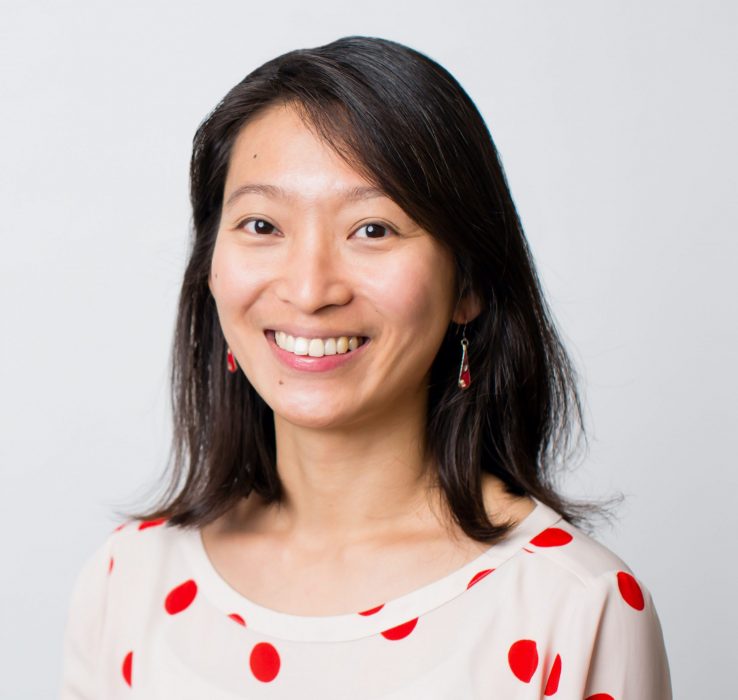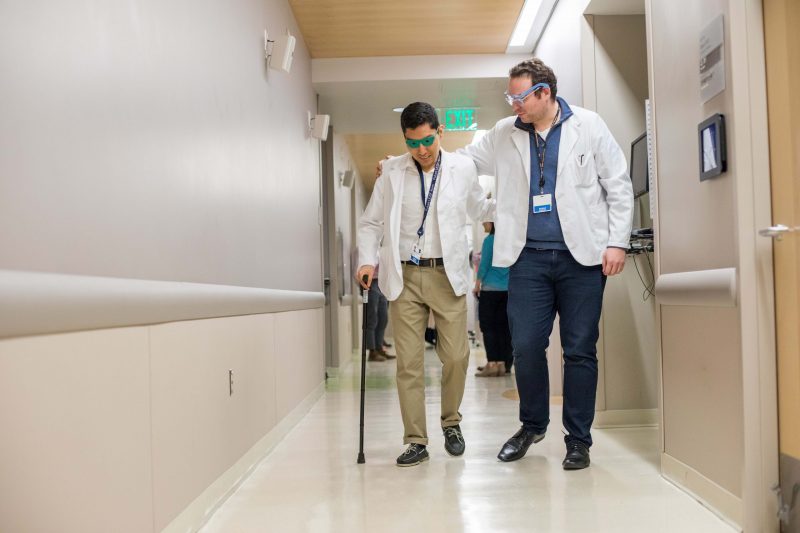UCSF medical students learn how to communicate with older patients – with respect and empathy
Coping with a series of migraine headaches is unpleasant enough. But being patronized and belittled when seeking treatment at an emergency room adds a good deal of insult to an already painful condition — especially if you’re an older adult.
That’s what happened to Yael Li-Ron, a retired magazine editor, when she sought treatment at a hospital in Hawaii. “I’ve noticed in the past few years that the ER staff treats me as feeble-minded. Despite the pain, I force myself to talk to them at length so they can tell that I’m intelligent. It’s infuriating,” said Li-Ron, who is now 66.
Li-Ron’s experience is hardly unique. Older adults say that medical professionals sometimes talk to them like they’re not very bright and humiliate them by directing questions and statements to younger family members as if they weren’t even in the room.
There’s more than anecdotal evidence to support that feeling. For example, a study of older patients in a nursing home in the United Kingdom found that 22 percent of the comments directed at the patients were in baby talk.
Fortunately, medical schools are taking note, and many have instituted training programs for medical students aimed at debunking the myths of aging and teaching the budding physicians to treat older patients empathetically and respectfully.

Five years ago, the medical school of the University of California-San Francisco revamped its curriculum. Now medical students in their first year and a half attend classes focused on communication skills. Geriatricians are always part of those sessions, and a major emphasis is on how to relate to older patients, says Dr. Pei Chen, assistant professor of medicine and associate director of the university’s geriatrics program.
“Students learn that treating older patients is not just about a disease or an organ. You really have to put everything together and take care of a person as a whole,” she said in an interview.
Like other medical schools, UCSF’s training includes simulated office visits with actors portraying patients. The actor, known in the medical world as a “standardized patient,” is briefed on the medical history and home life of the patient they are to portray. The job of the student is to make the patient comfortable and elicit information about their health condition.
The sessions last half a day or longer. In some of them, the actor will portray the patient at different ages. At the end of the session, the “patient” gives the student feedback and the staff evaluates the student’s communication skills and ability to empathize with the patient, Chen said.
Generally, the actors are theater professionals – but not always.
Barbeau Roy, a retired attorney, spent some eight years portraying standardized patients for the University of Colorado’s medical school. In his 70s at the time, Roy generally portrayed older adults, but once he played the part of an alcoholic doctor. Another scenario involved a couple who came to see a doctor with concerns that the male was developing dementia.
“The students were really into it, and I could see them improving as we gave them feedback,” Roy said.
UCSF’s school uses other teaching methods to improve students’ work with older patients. Students are asked to wear a prosthesis that mimics a health condition, for example, a pair of glasses that replicates having glaucoma.

Students need to learn that understanding an older patient’s home environment and lifestyle is critical, Chen said. “What in the person’s life is making them fall? If they are missing appointments, what’s going on? Why do they keep missing the bus that will take them here?”
Although her students are generally young, Chen, who says she is ‘in her 30s, finds them receptive to her lessons on empathizing with older adults. “I’ve had students reach out to older adults (they met through the program) and they became friends and would call each other regularly,” she said.
Some medical schools have programs in which students are paired with an older adult. At the University of North Carolina, “senior mentors” meet with students four times during the semester for approximately 90 minutes per visit. Students apply their developing clinical skills during their visits and interviews with their mentors.
According to a story in the New York Times, at least 20 medical schools in the United States have undertaken similar efforts to introduce students to healthy, active elders.
Dr. Ronald Adelman, co-chief of geriatrics at Weill Cornell, told the paper he realized that medical students were getting a distorted view of older adults. “Unfortunately, most education takes place within the hospital. If you’re only seeing the hospitalized elderly, you’re seeing the debilitated, the physically deteriorating, the demented. It’s easy to pick up ageist stereotypes.”





